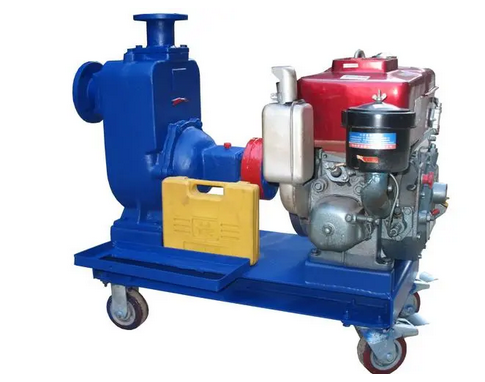How to solve diesel water pump diesel engine overheating
Diesel water pump Diesel engine overheating is a common problem that may be caused by a variety of factors. For this problem, the following are some common solutions and steps:
1. Check the cooling system
Is there enough cooling water:
Check whether the water tank and external pipes are leaking. If there is a leak, the leak should be repaired in time and the cooling water should be added.
If there is no leak, you can open the radiator water cap to observe whether the cooling water is sufficient. If it is insufficient, clean and softened cooling water should be added in time (such as rainwater, river water or tap water, avoid using hard water such as well water and saline water).
Cooling system cleaning:
Diesel engines that have been used for a long time are prone to thick scale accumulation in the cylinder and radiator, which affects the heat dissipation effect. The cooling system should be cleaned according to regulations to remove scale and impurities. When cleaning, chemical cleaning fluids such as 8% caustic soda solution, 10% sodium carbonate solution or 2.5% hydrochloric acid solution can be used.
2. Check the fan belt
Belt tightness:
The tightness of the fan belt directly affects the speed and cooling effect of the fan. If the belt is too loose, the fan speed will drop and the cooling intensity will decrease. The tightness of the fan belt should be checked and adjusted to ensure that it is within a reasonable tension range. When adjusting, you can press the middle of the belt with your fingers or tools to observe whether its sinking amount meets the standard (generally 10~20 mm).
If the belt is stained with oil and slips or the blades are deformed, they should be replaced or corrected in time.
3. Check the thermostat
Thermostat function:
The thermostat plays a role in adjusting the cooling intensity in the diesel engine cooling system. If the thermostat fails, it may cause poor cooling water circulation and poor heat dissipation of the diesel engine. The thermostat should be removed for inspection to observe its opening and closing at different temperatures. If the thermostat does not meet the requirements, it should be repaired or replaced in time.
4. Check the injection system
Injection time:
If the injection advance angle is too small, most of the combustion process will be transferred to the expansion work, increasing the volume above the piston and the contact area between the flame and the cylinder wall, thereby increasing the absorbed heat and exhaust temperature, causing the engine to overheat. The injection advance angle of the diesel engine should be checked and adjusted to ensure that it is within the normal range.
5. Other inspections
Water pump and radiator:
Check whether the water pump is blocked by dirt. If necessary, remove the dirt or repair the worn parts. At the same time, check whether the radiator core tube is blocked by debris. If necessary, remove it in time.
Load and speed:
Reduce the load and speed of the diesel engine to reduce its heat generation and heat dissipation requirements.
6. Comprehensive treatment
If the above methods cannot solve the problem of diesel engine overheating, it may be necessary to consider multiple factors and conduct comprehensive treatment. For example, check whether the lubrication system is working properly to ensure the lubrication and cooling effect of the engine oil; check the overall operating status and performance parameters of the diesel engine to ensure that it is in good working condition.





